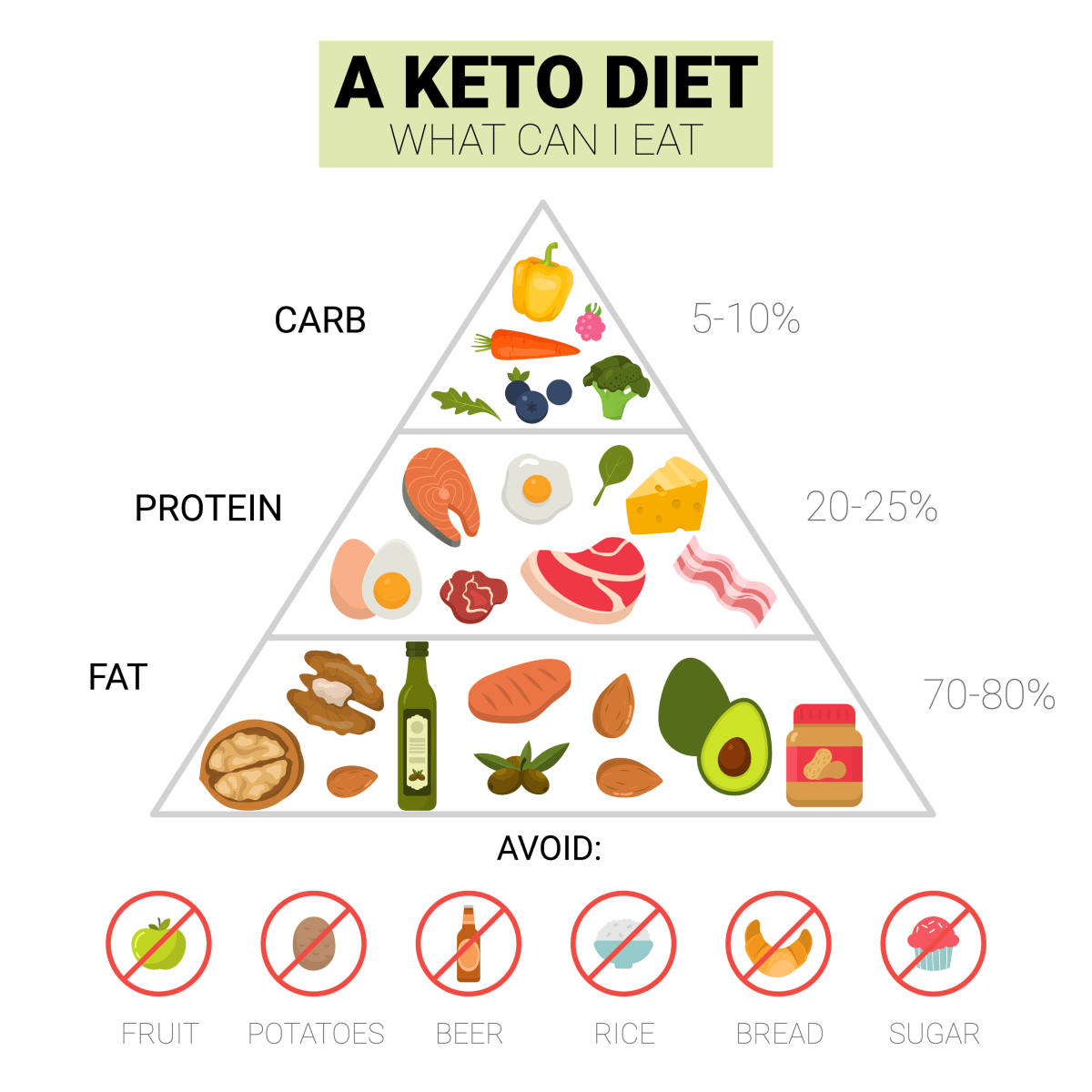Embark on a culinary journey into the world of ketogenic dieting with a 1200-calorie plan. Imagine vibrant meals bursting with flavor and healthy fats, meticulously crafted to fuel your body while adhering to strict macronutrient ratios. This isn’t just a diet; it’s a transformation, a delicious adventure in mindful eating designed to help you achieve your weight loss goals. We’ll explore the principles of keto, design delectable meal plans, and provide practical tips to navigate the path to success. Prepare to discover the satisfying simplicity of a well-structured ketogenic approach.
This comprehensive guide will walk you through creating a 1200-calorie keto meal plan, from understanding the fundamental principles of ketosis to crafting delicious and satisfying meals for breakfast, lunch, dinner, and snacks. We’ll cover recipe variations, address potential challenges, and emphasize the importance of consulting a healthcare professional before embarking on any restrictive diet. Get ready to unlock the secrets to a successful and enjoyable keto experience.
Sample 1200-Calorie Keto Meal Plan
This document provides three sample 1200-calorie keto meal plans, each featuring diverse breakfast and lunch options. Each plan emphasizes high-fat, moderate-protein, and very-low-carbohydrate intake, crucial for achieving ketosis. Recipes and preparation steps are included, along with meal-prepping tips for easier adherence. Remember to consult your doctor or a registered dietitian before starting any new diet plan.
Sample Keto Meal Plan 1: Breakfast and Lunch
This meal plan prioritizes simplicity and readily available ingredients. It’s ideal for beginners or those with limited time for meal preparation.
- Breakfast (approx. 350 calories): Scrambled eggs (3 large eggs) with 1 ounce of cheddar cheese and 1 tablespoon of butter. Preparation: Sauté diced onions and peppers (optional) in butter. Whisk eggs with salt and pepper. Pour into pan and scramble until cooked through. Stir in cheese. This vibrant yellow scramble, speckled with the orange of the cheese, offers a satisfying protein boost to start the day.
- Lunch (approx. 450 calories): Large salad with 4 ounces of grilled chicken breast, 2 cups of mixed greens, 1 avocado, and 2 tablespoons of olive oil and vinegar dressing. Preparation: Grill or pan-fry chicken breast seasoned with salt and pepper. Toss greens with avocado slices and chicken. Drizzle with dressing. The vibrant green of the salad contrasts beautifully with the creamy avocado and the golden-brown chicken, creating a visually appealing and nutritious lunch.
- Dinner & Snacks (approx. 400 calories): This section is left intentionally blank to allow for flexibility and customization based on individual preferences and dinner plans. Consider adding healthy keto-friendly snacks such as nuts, seeds, or cheese throughout the day to stay full and satisfied.
Sample Keto Meal Plan 2: Breakfast and Lunch
This meal plan focuses on incorporating more variety in textures and flavors, while maintaining the ketogenic macronutrient ratios.
- Breakfast (approx. 300 calories): Keto Smoothie: Blend 1 cup unsweetened almond milk, 1 scoop keto-friendly protein powder, 1 tablespoon of chia seeds, 1/4 avocado, and a handful of spinach. Preparation: Combine all ingredients in a blender and blend until smooth and creamy. This vibrant green smoothie, with its creamy texture from the avocado, provides a quick and easy way to start the day with essential nutrients.
- Lunch (approx. 500 calories): Zucchini noodles with pesto and shrimp. Use 2 medium zucchini, 2 ounces of cooked shrimp, and 2 tablespoons of pesto. Preparation: Spiralize zucchini into noodles. Sauté shrimp with garlic (optional). Toss zucchini noodles with shrimp and pesto. The bright green zucchini noodles, contrasted by the pink shrimp and vibrant green pesto, offer a fresh and flavorful keto lunch.
- Dinner & Snacks (approx. 400 calories): This section is left intentionally blank to allow for flexibility and customization based on individual preferences and dinner plans.
Sample Keto Meal Plan 3: Breakfast and Lunch
This meal plan offers heartier options, perfect for those who prefer more substantial meals.
- Breakfast (approx. 400 calories): Keto Omelet with Spinach and Mushrooms: Prepare an omelet using 3 eggs, 1/2 cup of spinach, 1/2 cup of sliced mushrooms, and 1 tablespoon of cream cheese. Preparation: Sauté mushrooms and spinach in butter. Whisk eggs with salt and pepper. Pour into a pan, add the sautéed vegetables and cream cheese. Cook until set. The fluffy omelet, speckled with the green spinach and brown mushrooms, provides a filling and flavorful keto breakfast.
- Lunch (approx. 500 calories): Chicken salad stuffed avocado: Mix 4 ounces of shredded cooked chicken breast with 2 tablespoons of mayonnaise, celery, and seasonings. Stuff the mixture into a halved avocado. Preparation: Cook and shred chicken. Combine with mayonnaise, celery, salt, and pepper. Fill avocado halves with the mixture. The creamy avocado, filled with the savory chicken salad, provides a visually appealing and satisfying lunch option.
- Dinner & Snacks (approx. 300 calories): This section is left intentionally blank to allow for flexibility and customization based on individual preferences and dinner plans.
Meal Prepping Tips
Planning and preparing meals in advance is key to sticking to a keto diet. Consider prepping ingredients like chopping vegetables or cooking chicken on the weekend to save time during the week. Storing leftovers in individual containers simplifies portion control and makes grabbing a healthy meal a breeze.
Addressing Potential Challenges and Considerations

Embarking on a 1200-calorie ketogenic diet requires careful planning and awareness of potential hurdles. This restrictive approach, while effective for some in achieving weight loss, necessitates a thorough understanding of its potential drawbacks and strategies for mitigation. Failing to address these challenges can lead to frustration, nutrient deficiencies, and ultimately, hinder the success of the diet.
A 1200-calorie keto diet, by its very nature, limits caloric intake significantly. This can lead to several challenges, impacting both physical and mental well-being. Understanding these potential pitfalls is crucial for successful implementation and achieving sustainable results.
Nutrient Deficiencies
Severely restricting caloric intake, especially in a restrictive diet like keto, increases the risk of nutritional deficiencies. The ketogenic diet emphasizes fats and drastically reduces carbohydrates, potentially leading to insufficient intake of essential vitamins and minerals commonly found in fruits, vegetables, and whole grains. For example, a lack of fiber, often present in high-carbohydrate foods, can result in digestive issues like constipation. Furthermore, restricting certain food groups can lead to deficiencies in vitamins like vitamin C (found abundantly in citrus fruits and vegetables) and various B vitamins (present in whole grains and legumes). To counteract this, meticulous meal planning is essential, focusing on nutrient-dense keto-friendly options. Supplementation, after consultation with a healthcare professional, might also be necessary to ensure adequate intake of essential vitamins and minerals. A multivitamin tailored to ketogenic diets can help bridge potential gaps in nutrient intake.
Keto Flu
The “keto flu” is a common side effect experienced by individuals transitioning to a ketogenic diet. Symptoms, which typically subside within a few days, can include headaches, fatigue, nausea, and dizziness. These symptoms are often attributed to electrolyte imbalances (sodium, potassium, and magnesium) resulting from the body’s shift from carbohydrate metabolism to fat burning. To mitigate the keto flu, adequate hydration is paramount. Consuming plenty of water and electrolyte-rich beverages, such as bone broth or electrolyte drinks, can help regulate electrolyte levels and alleviate symptoms. Furthermore, gradually transitioning to a ketogenic diet, rather than making a sudden switch, can help minimize the severity of the keto flu.
Long-Term Sustainability
The highly restrictive nature of a 1200-calorie keto diet presents challenges in terms of long-term sustainability. The limited food choices and the potential for social challenges (eating out, attending social events) can make it difficult to maintain the diet indefinitely. A successful long-term approach requires finding a balance between adhering to the ketogenic principles and incorporating flexibility to prevent feelings of deprivation and promote adherence. This might involve occasional “cheat meals” (within reason and planned carefully) or incorporating more variety within the ketogenic framework. Remember, a sustainable diet is one that can be integrated into your lifestyle without causing significant distress.
Importance of Healthcare Professional Consultation
Before starting any restrictive diet, including a 1200-calorie ketogenic diet, it is crucial to consult a healthcare professional. This consultation allows for a personalized assessment of your health status, potential risks, and suitability for the diet. A doctor or registered dietitian can help identify potential interactions with existing medications, assess your overall health, and provide guidance on nutrient intake to prevent deficiencies. They can also monitor your progress and make necessary adjustments to your plan, ensuring your health and well-being throughout the process.
Comparison with Other Weight-Loss Approaches
A 1200-calorie keto diet differs significantly from other weight-loss approaches, such as calorie restriction alone or low-fat diets. Calorie restriction focuses solely on reducing overall caloric intake, regardless of macronutrient composition. Low-fat diets, on the other hand, emphasize reducing fat intake while maintaining moderate carbohydrate and protein levels. The ketogenic diet’s unique focus on high fat, moderate protein, and very low carbohydrate intake leads to ketosis, a metabolic state where the body burns fat for energy. This metabolic shift can lead to rapid initial weight loss, but it’s important to note that long-term sustainability and overall health should always be prioritized. The effectiveness of each approach varies from individual to individual, and the best choice depends on various factors, including individual preferences, health conditions, and lifestyle.
Mastering a 1200-calorie keto meal plan is achievable with careful planning and a commitment to healthy choices. By understanding macronutrient ratios, embracing diverse recipes, and adapting to individual needs, you can successfully navigate the ketogenic lifestyle. Remember that consistency is key, and while this plan provides a solid foundation, consulting a healthcare professional is crucial before starting any restrictive diet. Embrace the vibrant colors, rich flavors, and satisfying textures of keto cuisine—your journey to a healthier you begins here.
FAQs
What are the potential side effects of a 1200-calorie keto diet?
Potential side effects include the “keto flu” (headache, fatigue, nausea), constipation, and nutrient deficiencies. These can often be mitigated by proper hydration, electrolyte supplementation, and a balanced approach to food choices.
How long can I safely follow a 1200-calorie keto diet?
The duration depends on individual factors and should be discussed with a healthcare professional. It’s generally not recommended for extended periods without medical supervision.
Can I exercise while on a 1200-calorie keto diet?
Yes, but adjust your exercise intensity based on your energy levels. Ensure adequate hydration and electrolyte intake to support physical activity.
Are there any specific supplements recommended for a 1200-calorie keto diet?
Electrolyte supplements (sodium, potassium, magnesium) are often recommended to combat the “keto flu” and support overall well-being. Consult a doctor or registered dietitian before taking any supplements.


